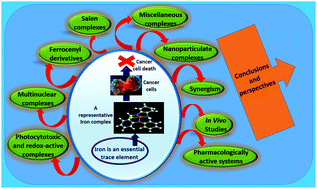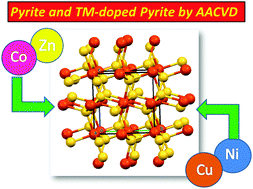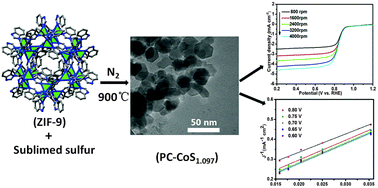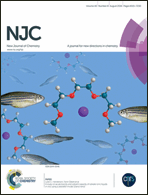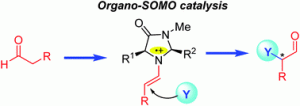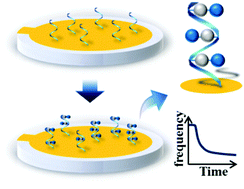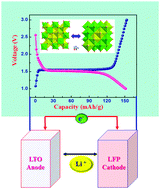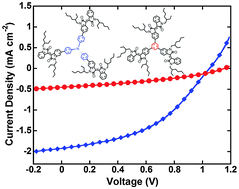From October – December 2015, our most downloaded NJC articles were:
Sangmyung Lee, Kuewhan Jang, Chanho Park, Juneseok You, Taegyu Kim, Chulhwan Im, Junoh Kang, Haneul Shin, Chang-Hwan Choi, Jinsung Park and Sungsoo Na
New J. Chem., 2015, 39, 8028-8034
DOI: 10.1039/C5NJ00668F, Paper
Christoph Janiak and Jana K. Vieth
New J. Chem., 2010,34, 2366-2388
DOI: 10.1039/C0NJ00275E, Perspective
Felix Jeremias, Dominik Fröhlich, Christoph Janiak and Stefan K. Henninger
New J. Chem., 2014, 38, 1846-1852
DOI: 10.1039/C3NJ01556D, Focus
Jianhua Shen, Yihua Zhu, Xiaoling Yang, Jie Zong, Jianmei Zhang and Chunzhong Li
New J. Chem., 2012, 36, 97-101
DOI: 10.1039/C1NJ20658C, Paper
Naoki Toshima and Tetsu Yonezawa
New J. Chem., 1998, 22, 1179-1201
DOI: 10.1039/A805753B, Paper
Sadia Khalid, Ejaz Ahmed, M. Azad Malik, David J. Lewis, Shahzad Abu Bakar, Yaqoob Khan and Paul O’Brien
New J. Chem., 2015, 39, 1013-1021
DOI: 10.1039/C4NJ01461H, Paper
Huihui Lin, Chuanxi Wang, Jiapeng Wu, Zhenzhu Xu, Yijun Huang and Chi Zhang
New J. Chem., 2015, 39, 8492-8497
DOI: 10.1039/C5NJ01698C, Paper
Xiangcheng Sun, Pavle V. Radovanovic and Bo Cui
New J. Chem., 2015, 39, 38-63
DOI: 10.1039/C4NJ01390E, Perspective
Monika Bilska-Markowska, Magdalena Rapp, Tomasz Siodła, Andrzej Katrusiak, Marcin Hoffmann and Henryk Koroniak
New J. Chem., 2014, 38, 3819-3830
DOI: 10.1039/C4NJ00317A, Paper
Jiangsheng Yu, Baofeng Zhao, Xuemei Nie, Baojin Zhou, Yang Li, Jiefeng Hai, Enwei Zhu, Linyi Bian, Hongbin Wu and Weihua Tang
New J. Chem., 2015, 39, 2248-2255
DOI: 10.1039/C4NJ02192D, Paper
Didier Astruc
New J. Chem., 2005, 29, 42-56
DOI: 10.1039/B412198H, Perspective
Zheng Ma, Hai Ming, Hui Huang, Yang Liu and Zhenhui Kang
New J. Chem., 2012, 36, 861-864
DOI: 10.1039/C2NJ20942J, Letter
Hongyu Zhen and Kan Li
New J. Chem., 2015, 39, 9031-9031
DOI: 10.1039/C5NJ90049B, Retraction
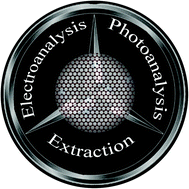
Xu Lu, Yohei Ishida and Tetsu Yonezawa
New J. Chem., 2015, 39, 6267-6273
DOI: 10.1039/C5NJ00909J, Paper
Shenguang Ge, Feifei Lan, Feng Yu and Jinghua Yu
New J. Chem., 2015, 39, 2380-2395
DOI: 10.1039/C4NJ01783H, Perspective
Teruhisa Ohno, Koji Sarukawa and Michio Matsumura
New J. Chem., 2002, 26, 1167-1170
DOI: 10.1039/B202140D, Paper
Kangfu Zhou, Yihua Zhu, Xiaoling Yang, Xin Jiang and Chunzhong Li
New J. Chem., 2011, 35, 353-359
DOI: 10.1039/C0NJ00623H, Paper
Marta Sowinska and Zofia Urbanczyk-Lipkowska
New J. Chem., 2014, 38, 2168-2203
DOI: 10.1039/C3NJ01239E, Perspective
Naresh Balsukuri, Sudipta Das and Iti Gupta
New J. Chem., 2015, 39, 482-491
DOI: 10.1039/C4NJ01086H, Paper
Luis M. Liz-Marzán and Paul Mulvaney
New J. Chem., 1998, 22, 1285-1288
DOI: 10.1039/A801214H, Paper
Xin Liu, Yuan Xie, Haobin Zhao, Xinyi Cai, Hongbin Wu, Shi-Jian Su and Yong Cao
New J. Chem., 2015, 39, 8771-8779
DOI: 10.1039/C5NJ01893E, Paper
Sailaja S. Sunkari, Bhagwan Kharediya, Satyen Saha, Bahjat Elrez and Jean-Pascal Sutter
New J. Chem., 2014, 38, 3529-3539
DOI: 10.1039/C4NJ00374H, Paper
Ananthakumar Ramadoss, Taehyun Kim, Gui-Shik Kim and Sang Jae Kim
New J. Chem., 2014, 38, 2379-2385
DOI: 10.1039/C3NJ01558K, Paper
Magdalena B. Foreiter, H. Q. Nimal Gunaratne, Peter Nockemann, Kenneth R. Seddon, Paul J. Stevenson and David F. Wassell
New J. Chem., 2013, 37, 515-533
DOI: 10.1039/C2NJ40632B, Paper
Chenglin Yan and Federico Rosei
New J. Chem., 2014, 38, 1883-1904
DOI: 10.1039/C3NJ00888F, Perspective
Comments Off on Top 25 most accessed NJC articles from October – December 2015
